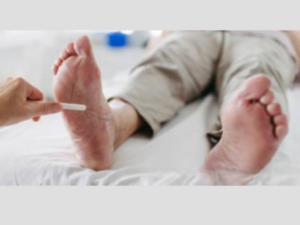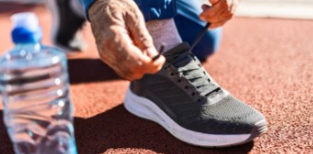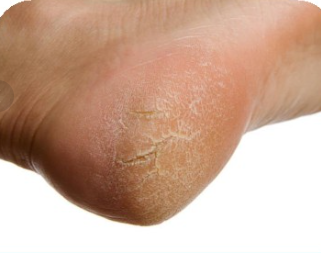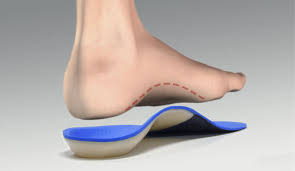Understanding Calluses
July 11 2024
🔍 Dive into our latest article on understanding and treating calluses! If you are someone who deals with calluses, this comprehensive guide is for you.
👟 What you’ll learn:
*Causes of calluses
*Effective treatment options
*Preventive measures
💡 Key Takeaways:
*Importance of proper footwear
*Role of moisturizing
*Benefits of orthotics and padding
🩺 Expert Tips: Our article provides practical advice and expert tips to keep your feet healthy and callus-free.
hashtag#Podiatry hashtag#FootHealth hashtag#Calluses hashtag#HealthyFeet hashtag#Podiatrist hashtag#FootCare hashtag#MedicalBlog hashtag#PatientCare hashtag#FFLC
Karan Malani
Kevin Lam, DPM, FACFAS

Overview:
- What are Calluses?
- Causes
- Symptoms and Diagnosis
- Treatment Options
- Preventative Measures
Calluses are a common foot problem that many patients seek help for, and as podiatrists, it is crucial to understand their formation, prevention, and treatment. This article delves into the causes of calluses, effective treatments, and preventive measures, providing comprehensive insights to enhance patient care.
What Are Calluses?
Calluses are thickened, hardened areas of skin that develop due to repeated friction, pressure, or irritation. They commonly form on the feet, particularly on the soles and heels, but can also appear on the hands and other areas subjected to frequent pressure. Unlike corns, which are smaller and have a central core, calluses are generally larger and less defined.
Causes of Calluses
Several factors contribute to the formation of calluses:
- Footwear: Ill-fitting shoes that are too tight, too loose, or lack proper support can cause excessive friction and pressure, leading to calluses. High heels and shoes with narrow toe boxes are common culprits.

- Activity Level: Activities that involve repetitive motion or pressure on the feet, such as running, walking, or standing for long periods, can result in calluses.
- Foot Structure: Certain foot shapes and abnormalities, such as bunion, hammertoes, and flat feet, can create uneven pressure points, increasing the likelihood of callus formation.
- Occupational Hazards: Jobs that require prolonged standing or involve manual labor can contribute to callus development on the feet and hands.
- Skin Condition: Dry skin is more prone to callus formation as it lacks the elasticity to withstand friction and pressure.

Symptoms and Diagnosis
Patients with calluses may experience:
- Thickened, rough skin
- A hardened, raised bump
- Pain or tenderness under the skin
- Dry or flaky skin in the affected area
Diagnosis is primarily based on physical examination. Podiatrists should asses the patient’s footwear, activity level, and any underlying foot deformities to determine the cause of callus formation.
Treatment Options
Effective callus management involves a combination of professional treatments and patient education on preventive measures.
- Debridement: This is the most common treatment for calluses. Using a scalpel, the podiatrist carefully shaves away the thickened skin. This procedure should be performed regularly to manage severe calluses effectively.
- Keratolytic Agents: These topical treatments contain ingredients such as salicylic acid, urea, or ammonium lactate, which help soften and break down the thickened skin. Patients can apply these agents at home as part of their daily foot care routine.

- Padding and Orthotics: Custom-made orthotic devices and cushioning pads can redistribute pressure away from callus-prone areas, reducing friction and allowing the skin to heal. These devices are especially beneficial for parents with structural foot issues.
- Footwear Modification: Educating patients on choosing appropriate footwear is crucial. Shoes should have a wide toe box, adequate arch support, and cushioning to minimize pressure points. Orthopedic shoes or custom footwear may be recommended for severe cases.
- Moisturizing: Regularly applying a thick, emollient-rich moisturizer can help keep the skin hydrated and more resilient to friction. Patients should be advised to moisturize their feet daily, particularly after bathing. Pumice Stones and Foot Files: Instruct patients on the proper use of pumice stones or foot files to gently exfoliate the callused areas. Emphasize the importance of not overdoing it, as excessive filing can damage the skin.
Preventative Measures
Preventing calluses involves reducing friction and pressure on the feet. Here are some tips to share with patients:
- Choose Proper Footwear: Encourage patients to wear shoes that fit well and provide adequate support. Recommend shoes with a wide toe box and cushioning to distribute pressure evenly.
- Use Insoles and Padding: Suggest the use of cushioned insoles or padding in areas prone to calluses. These can help reduce friction and pressure.

- Maintain Foot Hygiene: Regular foot care, including washing and moisturizing, can keep the skin healthy and less susceptible to calluses.
- Monitor Foot Health: Advise patients to regularly inspect their feet for any signs of calluses or other issues. Early intervention can prevent minor problems from becoming severe.
- Activity Modification: For patients with high activity levels, recommend taking breaks and alternating activities to reduce continuous pressure on the feet.
- Regular Podiatry Visits: Encourage patients to schedule regular check-ups with their podiatrist to monitor foot health and address any emerging issues promptly.
Calluses, while common, can significantly impact a patient’s comfort and mobility if not properly managed. As podiatrists, providing comprehensive care through debridement, keratolytic agents, orthotics, and patient education is essential. By emphasizing prevention and proactive foot care, we can help our patients maintain healthy, pain-free feet and improve their overall quality of life.
Educating patients about the importance of proper footwear, regular moisturizing, and routine foot  inspections will empower them to take an active role in their foot health, ultimately reducing the incidence and severity of calluses. Through a collaborative approach, podiatrists can make a significant difference in their patients’ lives, ensuring that they remain active and comfortable on their feet.
inspections will empower them to take an active role in their foot health, ultimately reducing the incidence and severity of calluses. Through a collaborative approach, podiatrists can make a significant difference in their patients’ lives, ensuring that they remain active and comfortable on their feet.
If you or someone you know is experiencing , don’t hesitate to seek professional advice from a podiatrist, contact Dr. Malani’s office at (239) 430-3668 (FOOT) or visit www.NaplesPodiatrist.com to schedule an examination.

 Fax: (239) 692-9436
Fax: (239) 692-9436 Tel: 239-430-3668
Tel: 239-430-3668

